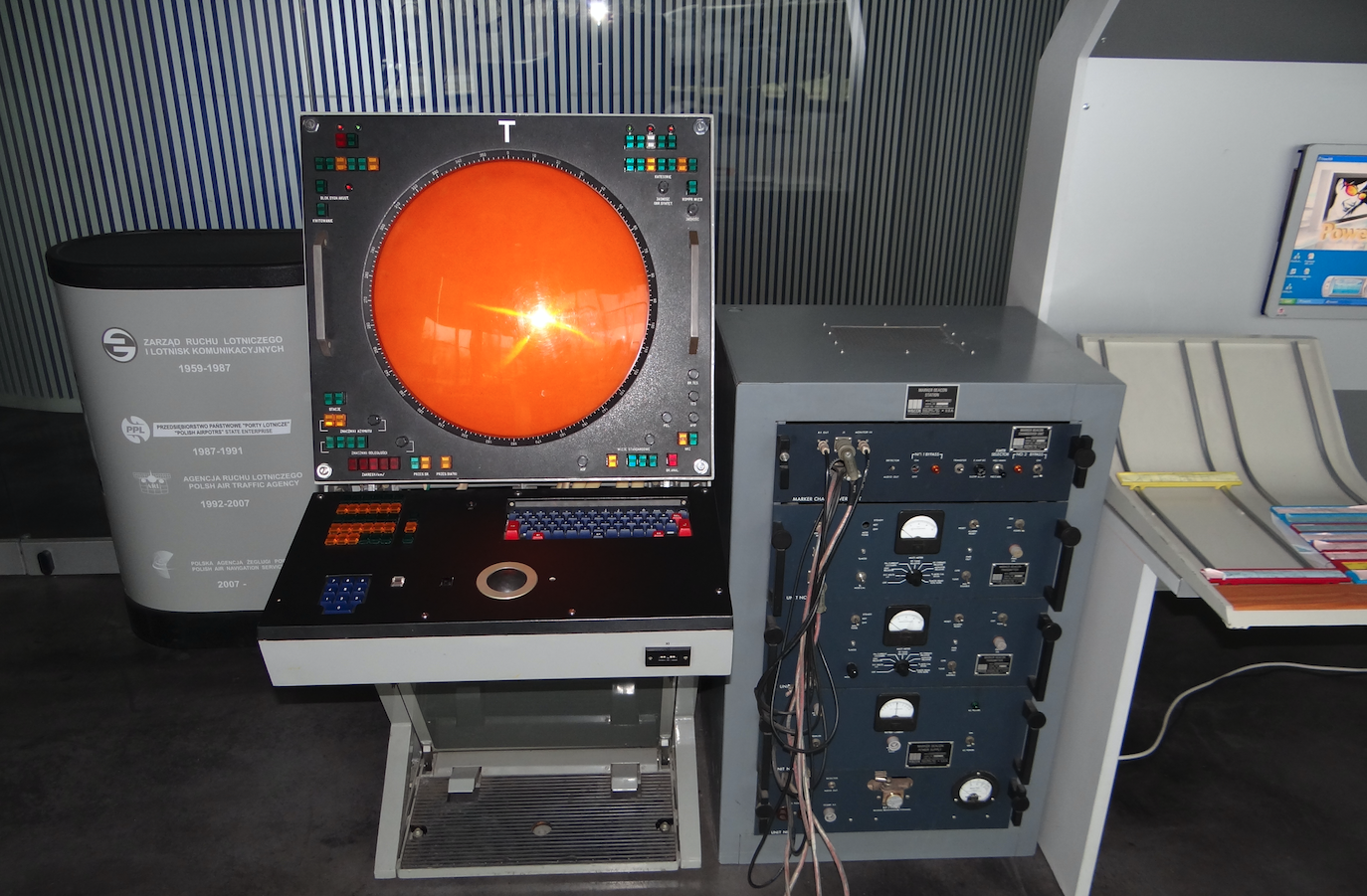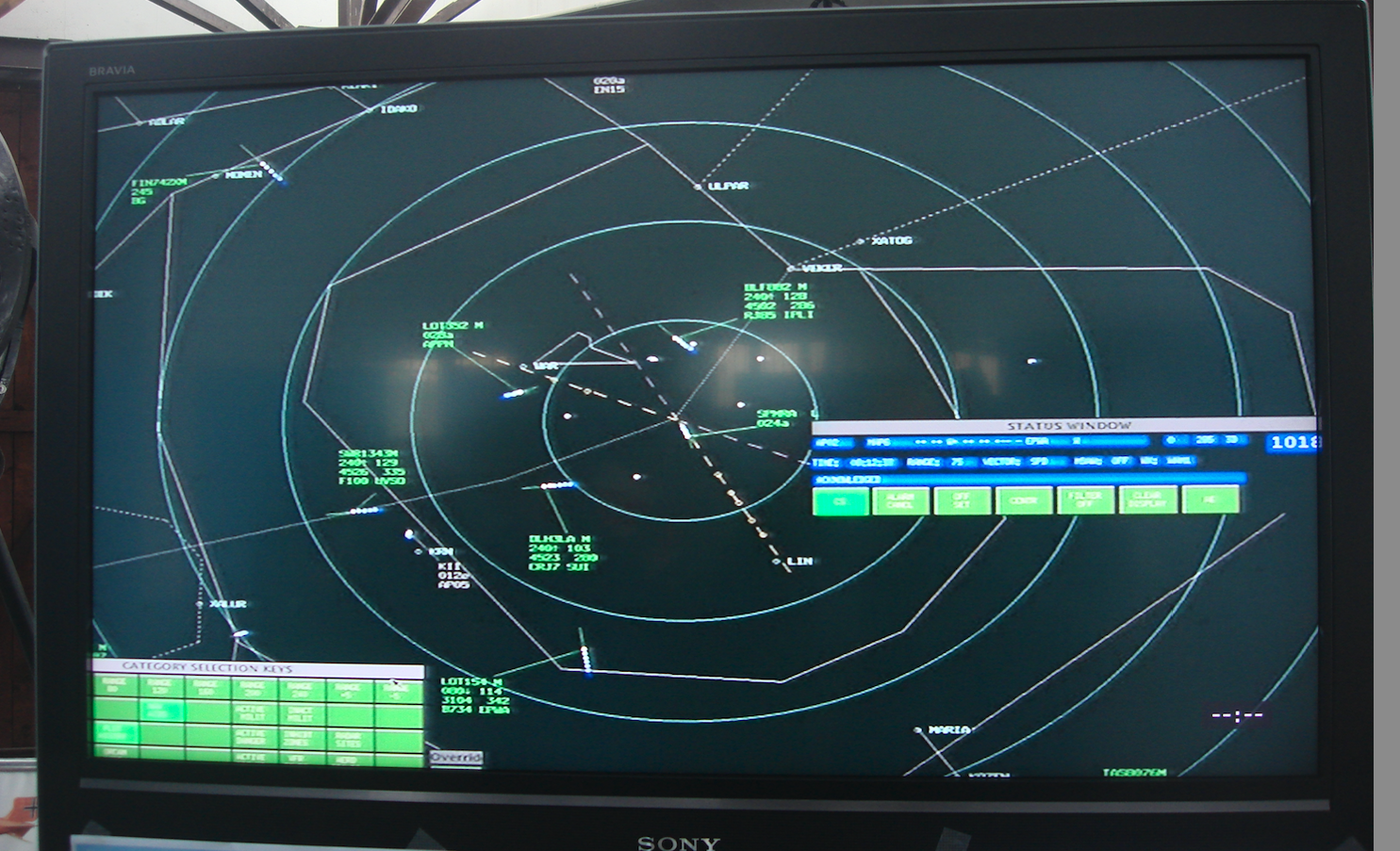Kraków 2014-11-12
Radar air traffic control system.
The air traffic control system is to ensure safe flight of aircraft in controlled space, and especially their proper separation. In the case of using airspace also shared by military aviation, this space is closed to civil aviation in advance. There are also spaces (areas) that are dangerous and prohibited for civil aviation. The movement of a civil aircraft in the space of the air traffic control system is called controlled flight.
Only a dozen or so years ago, in our part of Europe, the term air corridors and air route was used. However, currently, mainly for economic reasons and in accordance with the Open Skies philosophy, flights are carried out along the shortest possible route from the departure airport to the destination airport. Therefore, the concept of air corridors practically disappeared, and the concept of air route remained. The air corridor was 20 km wide.
An airway is a separate strip of space, of a given shape (including appropriate height and width), intended for the movement of aircraft.
Airways are divided into "Lower Airways" and "Upper Airways". Lower roads start from flight level FL95 (9,500 ft, 2,895.6 m) to FL285 (28,500 ft, 8,686.8 m) and are 18.5 km (10 NM) wide. Upper roads run from FL285 (28,500 ft, 8,686.8 m) to FL460 (46,000 ft 14,020.8 m). Width 18.5 km (10 NM). The course of air routes is marked by navigation points.
In the second half of the 1990s, a new model of demarcating and closing air routes was developed in the Republic of Poland. The state aviation supervision authority (Civil Aviation Authority) and the Polish Air Force Command (previously the Air Force and Air Defense Command) specify for controlled flights; 1/ airway, 2/ controlled zones of civil airports, 3/ controlled areas of civil airports, 4/ controlled areas of civil and military airport nodes, 5/ controlled zones/areas/ of military airports, admitted to international traffic, 6/ holding zones.
In Polish airspace, in addition to those listed above, they are designated as necessary for controlled flights; 1/ conditional airways (they are open only at times and at levels agreed with the appropriate military authorities), 2/ airfield control zones/areas in the flight area of military airports admitted only to domestic traffic, 3/ conditional holding zones (only during the operation of the air traffic control unit at a given airport), 4/ conditional controlled airspaces.
It follows from the above that the network of air routes is not constant and may change significantly in particular periods of the year. However, there is a trend towards an ever-increasing airway network due to ever-increasing commercial traffic. As a curiosity, we will write that there is also the concept of a weekend air route, which is a variation of a permanent air route.
Due to much more precise navigational aids, current airways are congested by reducing the separation between aircraft. In addition, commercial traffic is greatly affected by the military and political situation. As a result, specific situations occur in some parts of the world. Such specific regions are, for example, a significant part of France or the Gulf States.
The airspace of each country consists of one or more Flight Information Regions (FIR). In the vicinity of airports, the conventional airspace resembles a cylinder of appropriate radius and height with divisions into ceilings.
The flight of a civil aircraft follows a fixed route within controlled airspace. Before take-off, a person authorized by the aircraft operator (owner, pilot or airline office) submits a flight plan describing the route, type and equipment of the aircraft. The flight plan must reach air traffic control in the aeronautical information regions over which the flight is to be made. The flight route is described according to the reporting points designated by ground radio navigation aids.
The job of air traffic control is to ensure separation (vertical and horizontal spacing) between aircraft. This task consists of providing pilots with information (directives) regarding course and altitude changes, providing information about the situation in the air, meteorological conditions and possible restrictions. An absolute condition for maintaining separation is proper identification of individual aircraft in space and receiving current information about their flight status, course, altitude and further route.
Air traffic controllers have appropriate licenses and authorizations that are periodically verified. The work of an air traffic controller is responsible and stressful. The controller, first of all, must have knowledge and be sure of it. He should have the ability to anticipate the situation for a few or even several minutes ahead. In fact, the controller is the eyes of the flight crew. He is the one who has full insight into the air situation. On the other hand, the crew of an airplane flying at 900 km/h spend much more time; flight parameters, machine condition (engines, installations, imposed time regimes, fuel condition), radio communication – than observation of outer space. In addition, visibility from the cockpit of a commercial aircraft is limited.
Until 2002, the control over air traffic in the Republic of Poland was exercised by the service called ATS (Air Traffic Service). This year the Aviation Law Act came into force and we became harmonized with Western Europe.
There are three elements to control; Area Control, Approach Control, Airport Control. The first element is not necessarily related to the airport. It is usually located where a sufficiently large radar (or array) is installed to cover the entire FIR area. The next two items are usually found together and are located at or near the airport.
Written by Karol Placha Hetman


